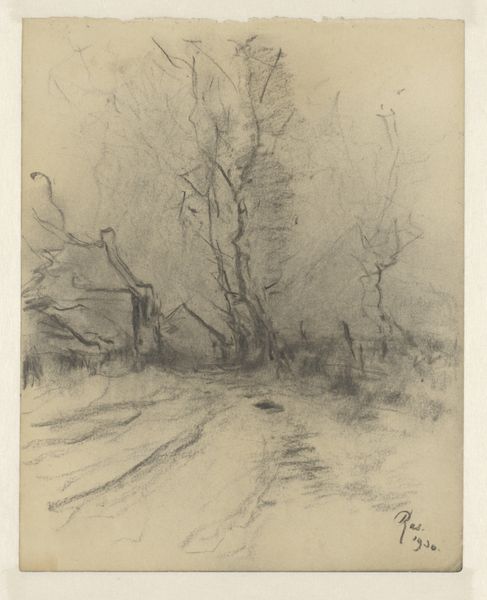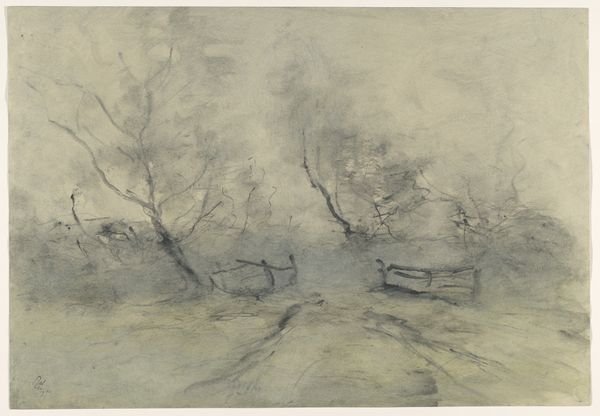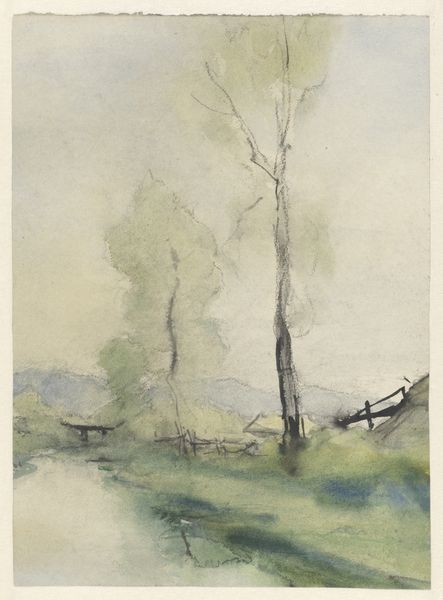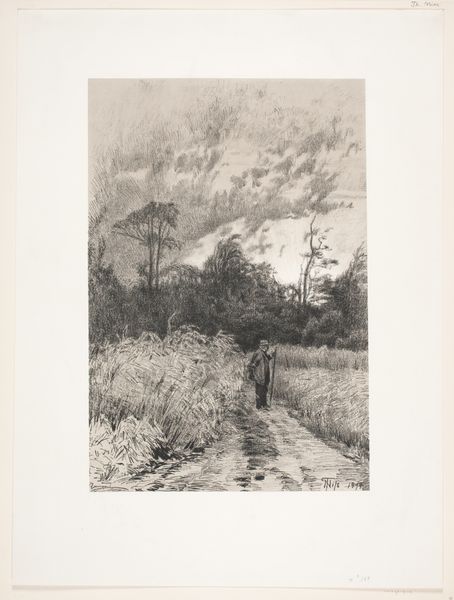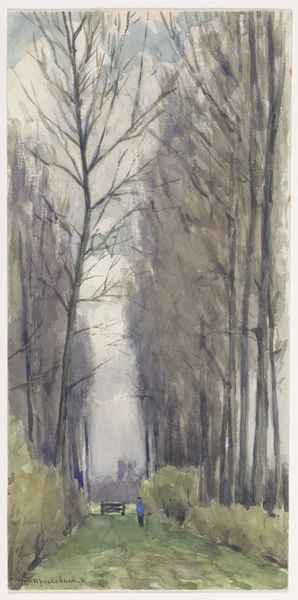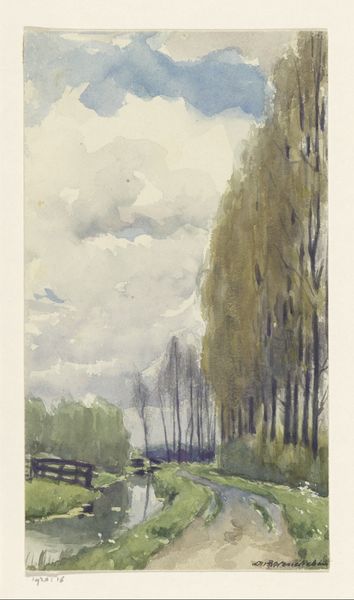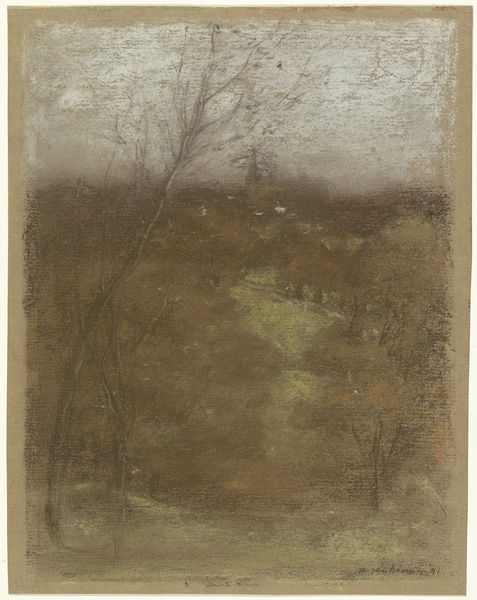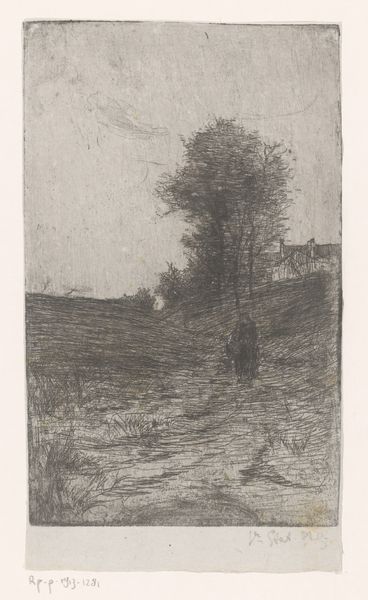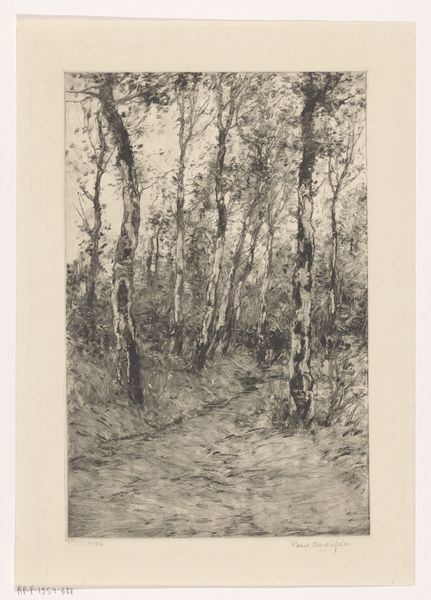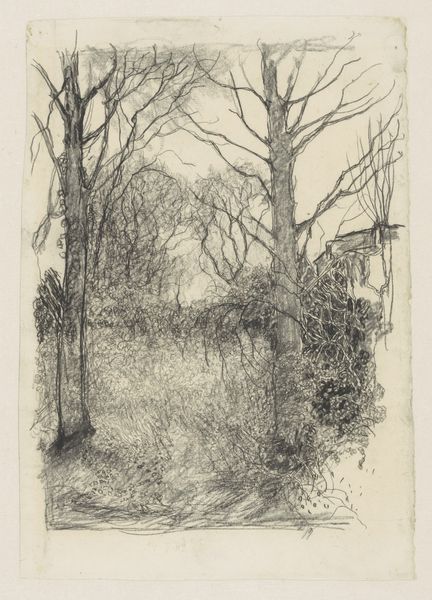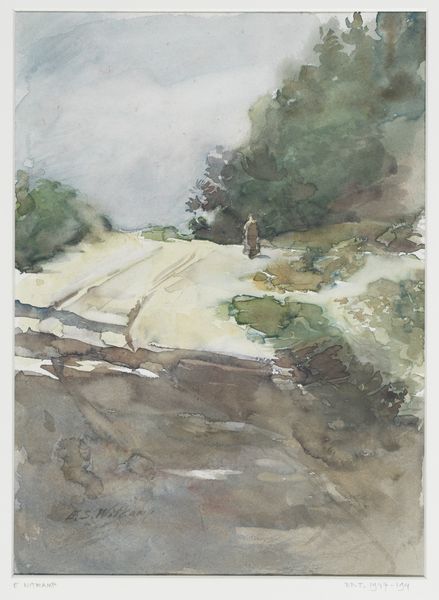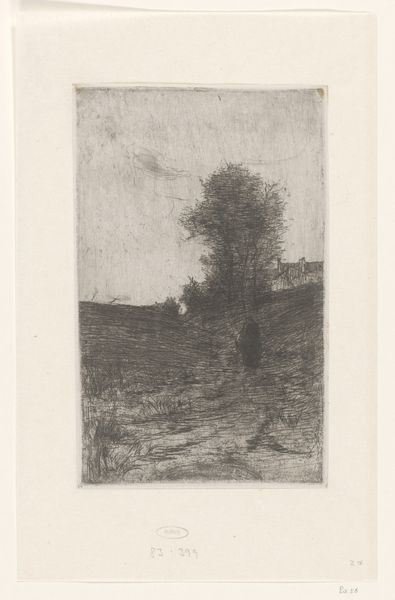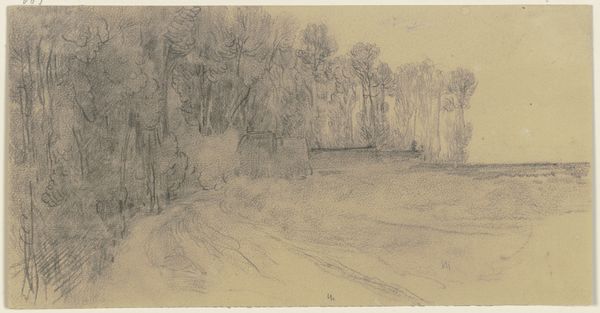
drawing, pencil
#
drawing
#
landscape
#
pencil
#
line
Dimensions: height 507 mm, width 725 mm
Copyright: Rijks Museum: Open Domain
Editor: We're looking at "Landweg," a pencil and drawing by Pieter H.J.J. Ras, potentially from 1933. I’m immediately drawn to the use of line to create a sort of ethereal landscape, and I am very curious about Ras' choice of media. What can you tell us about the cultural landscape in which Ras was operating, and his material choices? Curator: Well, let’s consider the context. 1933 places us in a period of immense social upheaval. The Great Depression had a profound effect on artists and the materials they were able to access. Pencil and paper were economical and readily available – a practical choice but perhaps also a conscious one. There's a certain humility inherent in such common materials, wouldn’t you agree? Editor: I hadn’t thought about it that way, that it's not necessarily only expressive, but potentially the economical nature of the art is important, too. Curator: Precisely. And look at how he’s used them. It’s not just about representing the landscape, but about documenting the very *process* of observing. What do you think he is documenting, and how is the documentation impacted by using just graphite and paper? Editor: The barren trees, the path… it speaks to a quiet observation, perhaps a reflection of the widespread anxieties of the time. And by sticking to a limited, mundane medium, the artist allows for broad distribution through methods like photography. Curator: Yes! By emphasizing the handmade yet replicable nature, the drawing itself democratizes this observation and provides a stark reflection on the anxieties that are happening throughout Europe and the rest of the world. Editor: I’m struck by the thought of “Landweg” as a quiet response to broader social and economic forces – that a drawing is not only something aesthetically pleasing, but is something that speaks to access and production. Curator: Exactly. It reminds us to always look beyond the surface, to question the artist’s role as a worker responding to and shaping their environment.
Comments
No comments
Be the first to comment and join the conversation on the ultimate creative platform.
